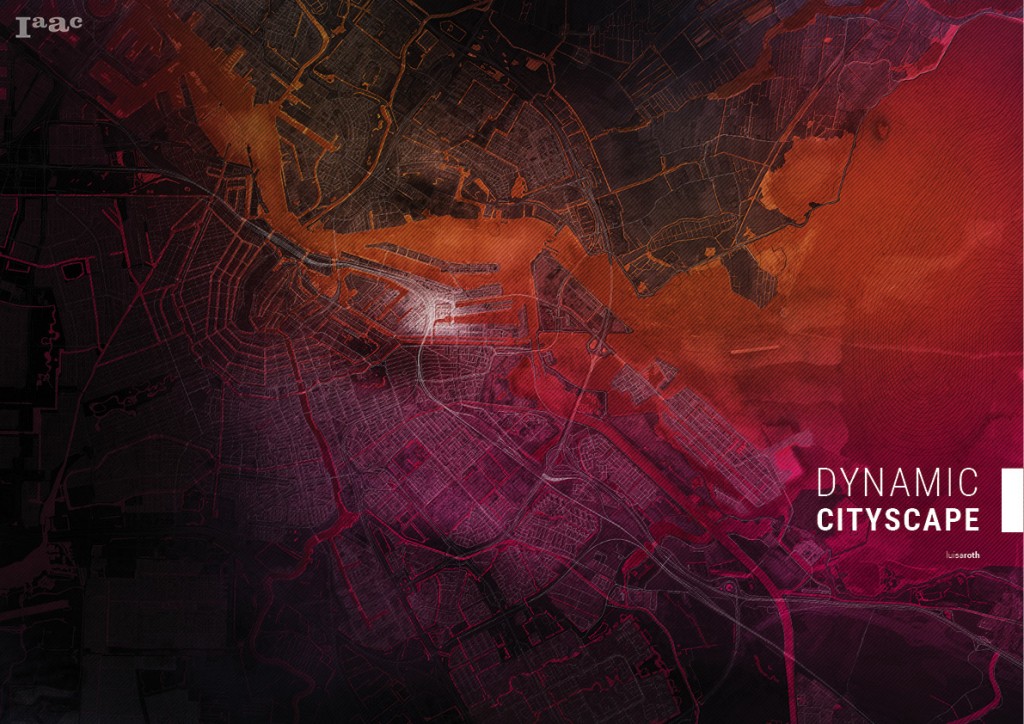
DYNAMIC CITYSCAPE – The potential of adaptive urban eco-districts in the context of climate change.
The consequences of recent global issues such as climate change, accelerating sea levels and overpopulation give rise to a new perspective within the continuous debate on sustainability and autonomy of complex urban systems. In this context, the dynamic cityscape project seeks to explore the potential of an adaptive and dynamic urban eco-habitat based on diversity and productivity for future civilizations in emerging natural territories. Particularly in delta regions the environmental conditions are expected to shift drastically due to global warming. Hence, hundreds of low-lying cities such as Amsterdam in the Netherlands are likely to become critically endangered by frequent or even permanent flooding in the near future, supposably leading to land and housing shortage.
Currently, strategies for coastal protection and land conservation are limited to traditional measures which, in fact, have heretofore revealed their vulnerability to failure and collapse. In addition, the rapid progress of climate change will presumably provoke expenses for coastal maintenance and the consumption of valuable construction materials to increase enormously.
The dynamic cityscape project urges to accept potential losses caused by flooding and other catastrophes as part of an inevitable environmental shift initiated by former destructive human intervention. As an alternative approach this research proposes to consider the ocean’s surface as an inhabitable space for future civilizations and establish self-sustaining city clusters featuring adaptivity and dynamism. The dynamic cityscape is a floating eco-habitat which is able to sustain itself in terms of energy and food production as well as water and waste management. The eco-district comprises of various functional nodes which thrive among each other within a highly interconnected network. Featuring cyclical metabolic conditions, the urban cluster relies exclusively on renewable resources and recycled materials.
The dynamic cityscape project proposes a modular fabrication and installation system which allows morphological and functional flexibility on an urban scale as well as in a global context. The elements can be pre-fabricated, comfortably transported to the site and flexibly installed to generate manifold morphologies. Multi-scalarity and modularity are combined within a comprehensive approach which renders high adaptability and responsiveness to local requirements and individual needs of approximately 10,000 inhabitants. The morphology appears as an urban topography generating areas of variable densities which are determined according to cluster constellation, distribution of functions and environmental criteria such as orientation, geography, etc. The urban cluster is based on a dynamic agent-based algorithm driven by attraction and rejection forces. This network strategy facilitates morphological and functional adjustments according to emerging environmental conditions and events.
The cityscape cluster serves as an autonomous urban entity which is not only able to sustain itself, but which also gives feedback to the city of Amsterdam, responds to its needs and establishes a mutually beneficial relationship with it. The development of floating habitats in cities such as Amsterdam could enhance the living quality of future civilizations by adapting to predictable environmental changes and thriving for a symbiotic relationship with the immediate natural surroundings. Floating cities could be a solution for the human species to overcome environmental
transformations and become part of natural processes, rather than trying to control or defeat them.
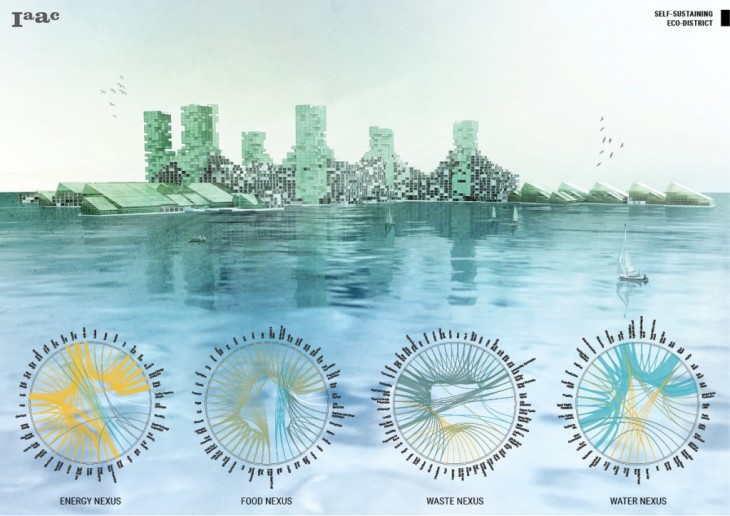
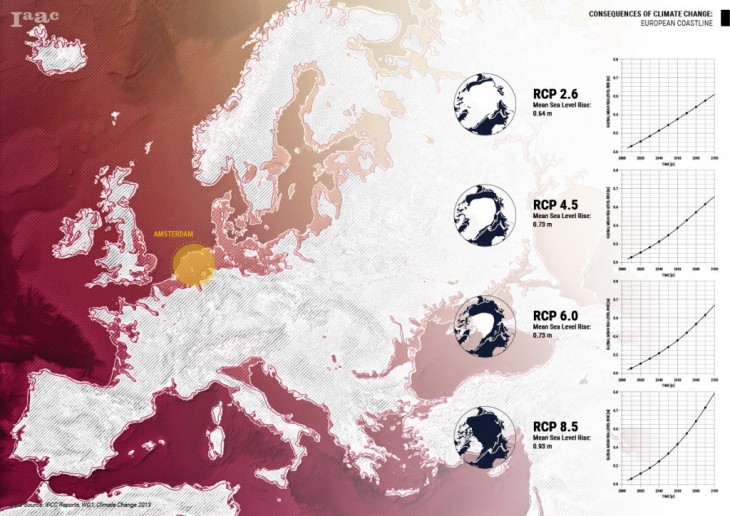
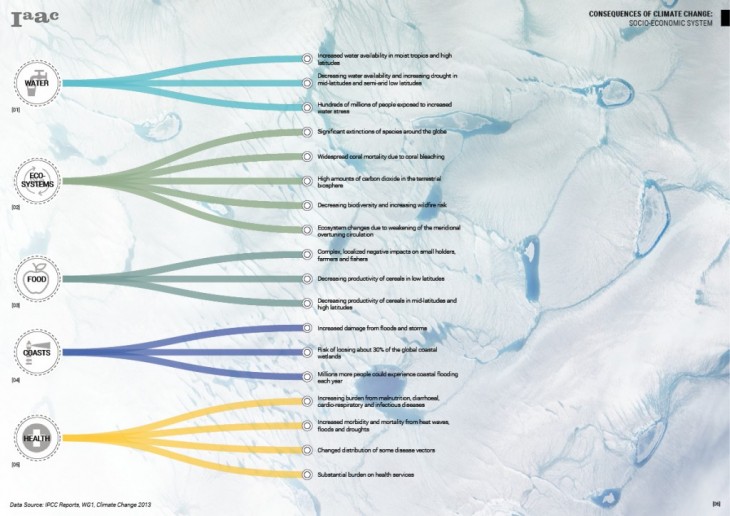
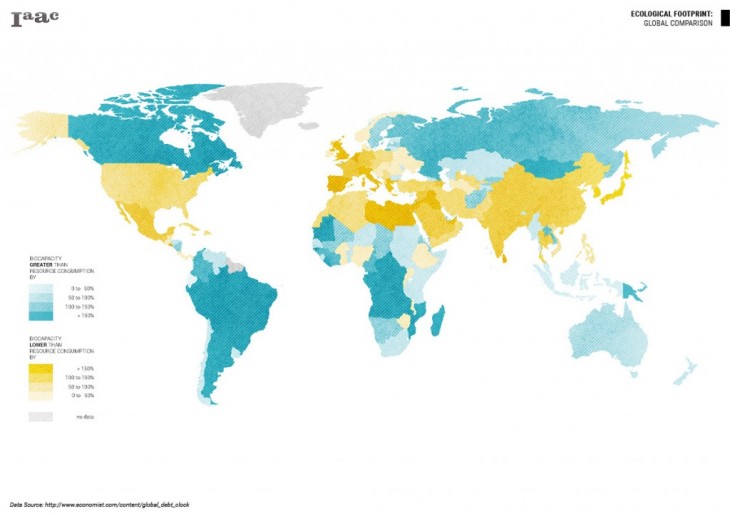
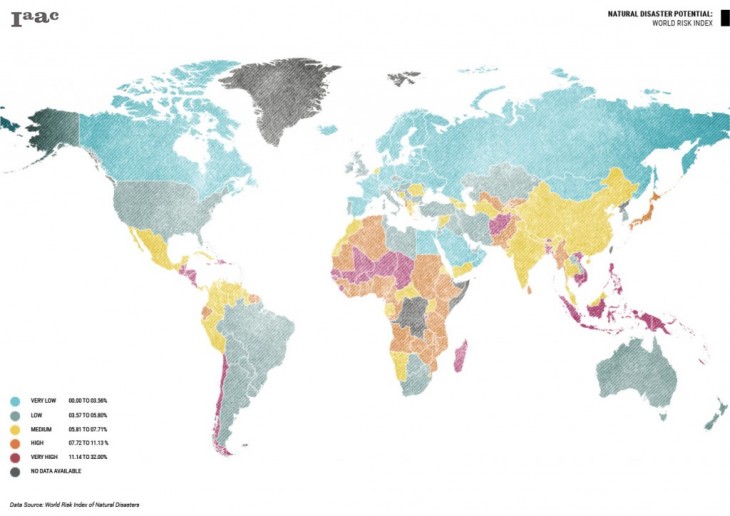
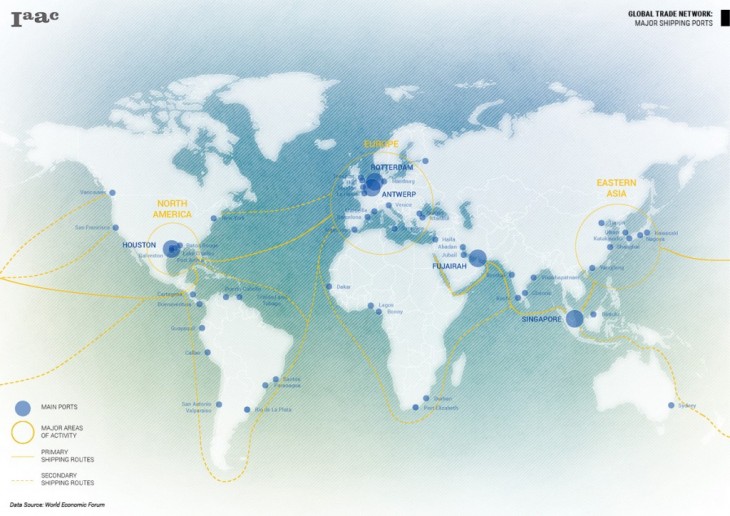
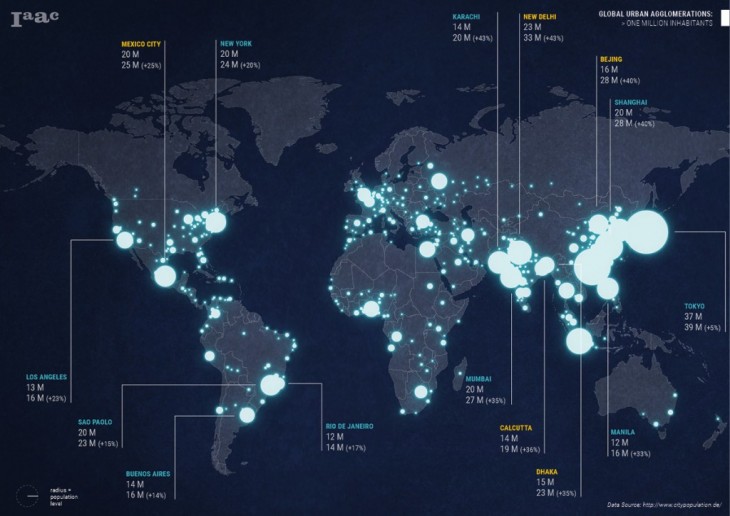
Currently, the consequences of climate change caused by destructive human intervention are shattering our planet’s life system. Particularly in regions such as the North Sea global warming is causing drastic changes of the natural environment including arctic ice melting and the expansion of water volumes. As indicated by the Intergovernmental Panel on Climate Change (IPCC) climate change will cause sea levels to rise approximately by 0.93 meters until 2100. [1] Therefore, hundreds of low-lying urban habitats in coastal regions will be critically endangered by frequent flood events in the near future. According to Joost Schrijnen “the consequences of global warming give rise to a different perspective on the question of sustainability.” [2]
At the same time mankind experiences the most radical demographic shift in history. The number of global population has doubled in the period from 1960 to 2000 and is expected to raise up to more than 11 billion by 2100. Approximately 40% of the world’s cities with a population of 1 to 10 million inhabitants are located near coastlines and, thus, will be strongly affected by land shrinkage and housing shortage.
Moreover, one of the main local problems today is the dependency of modern cities on fossil fuels which is ecologically, economically and geopolitically untenable as fossil energy sources are verifiably finite. At the same time, wastes are generated faster than they can be converted back to useful resources. Most contemporary cities are dependent systems which rely on external inputs such as trade. In fact, the larger and richer a city, the more it usually consumes from across the world rather than from its own hinterlands. Within this research the main focus has been on the city of Amsterdam in the Netherlands, explicitly on site of Durgerdam and Schellingwoude which is an immediate offshore zone located north-west of the city core. In case of flooding the forthcoming losses at this site are substantial. In addition, the negative impacts caused by rising sea levels could include ground subsidence or salinization of fresh water sources leading to water shortage, as well as damages on marine and terrestrial ecosystems.
In the Netherlands, planning strategies for an urbanization of the sea surface have emerged over the past years to defeat overpopulation and land shortage as more than two-thirds of the dutch population lives below sea level. Several companies are currently exploring the potential of ocean urbanization as a new strategy for urban adaptation. As stated by Carina Czapiewska of DeltaSync: „Building on water is not only a good idea for the Netherlands; it can be a global solution.“ [3]
In this context, how can urban habitats adapt to predictable changes of the environment and develop a symbiotic relationship with their natural surroundings? Could an extended urbanization of the sea surface be a solution for a coastal city such as Amsterdam suffering from population increase and climatic stress? As the urbanization of the sea surface offers new spatial opportunities, how can a city such as Amsterdam take advantage of new resources and urban constellations in order to become more productive and self-sufficient?
Within the scope of this research, environmental and economic factors have been explored which are essential for prosperity and sustainability of coastal urban habitats such as Amsterdam. The functional principles of natural ecosystems can serve as an inspiration for urban systems. An ecosystem is a dynamic entity defined by the interaction of living organisms among each other and with nonliving components of the environment. [4] Ecosystems are highly optimized networks for energy production and exchange featuring a circular zero-waste metabolism. Such as ecosystems, urban systems will need to exhibit adaptivity, flexibility and metabolic circularity in order to survive in an emerging future environment. The aim of this thesis is to develop an urban strategy featuring a circular economy can potentially result in resilience, autonomy and self-sufficiency of urban habitats. This research project seeks to identify how we are part of ecosystem dynamics and how our actions have an impact on the surrounding biosphere.
The aims and objectives of this work are framed within the assumption of a postapocalyptic future scenario in which the ocean itself becomes valuable for habitation and production. In this scenario, saltwater is considered a profitable and alternative resource due to general land losses and increasing demands for new habitats and sustainable economies. In a future environment which will be predominantly urban and which will be strongly affected by global issues such as climate change and population increase, cities will need to adopt circular metabolic systems by using renewable resources and transforming local resources into vital functions. One of the greatest challenges will be to maintain human standards, but minimize environmental impacts of cities at the same time.
This research project targets to identify an evolutionary strategy which could allow dynamic urban growth of delta settlements. At this point in history it is inevitable to rethink traditional urban systems in terms of adaptability and efficiency of the productive metabolic infrastructure.
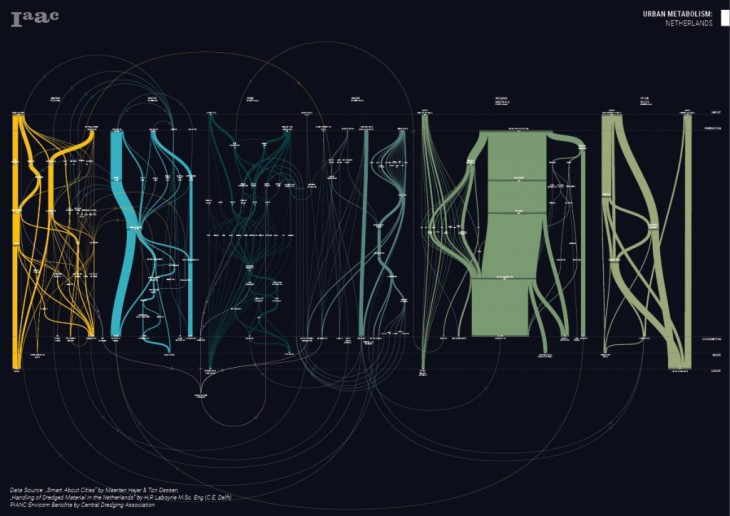
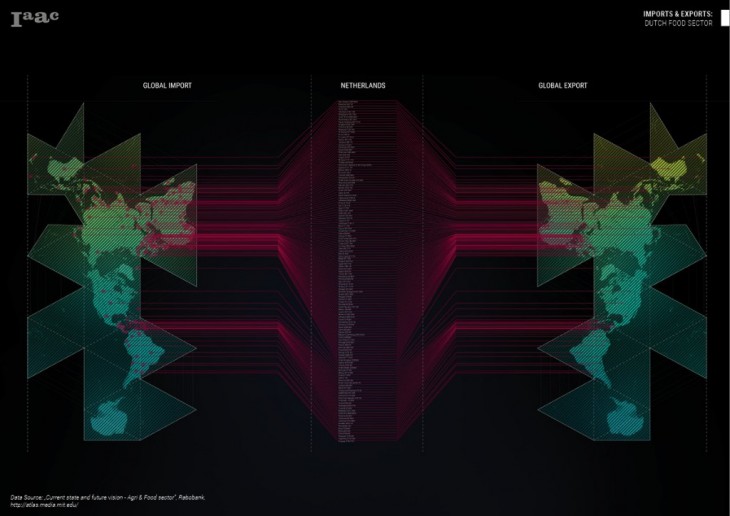
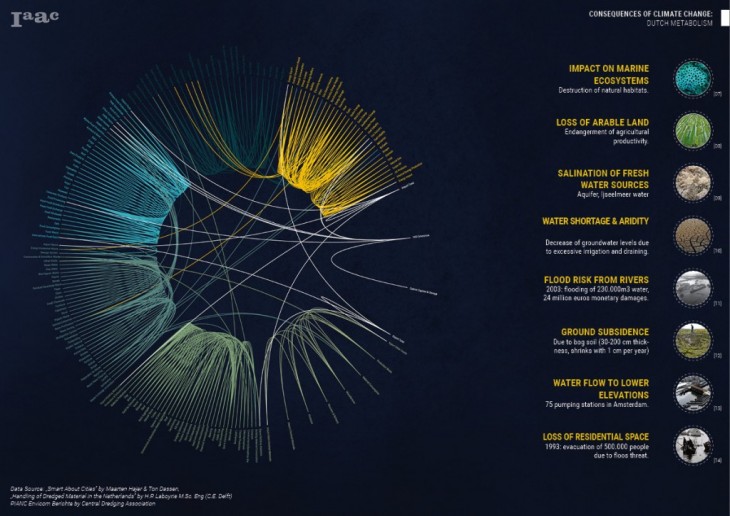
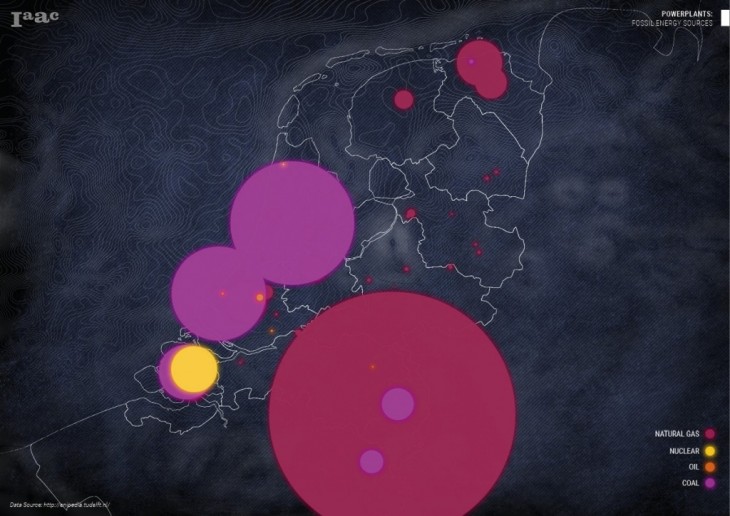
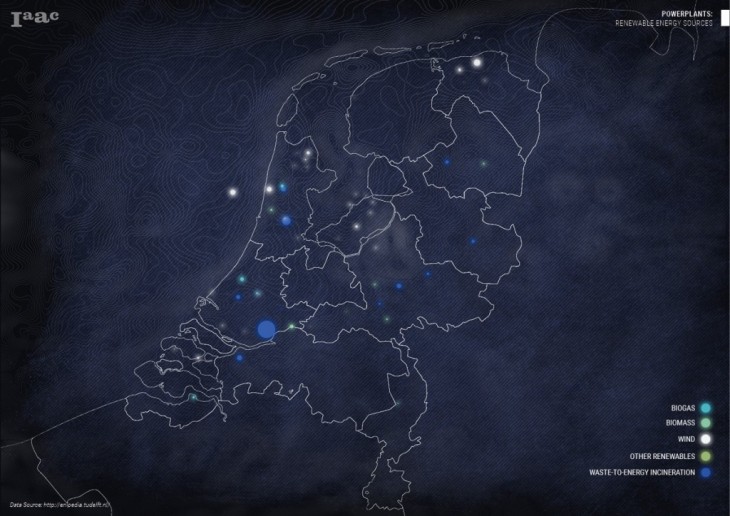
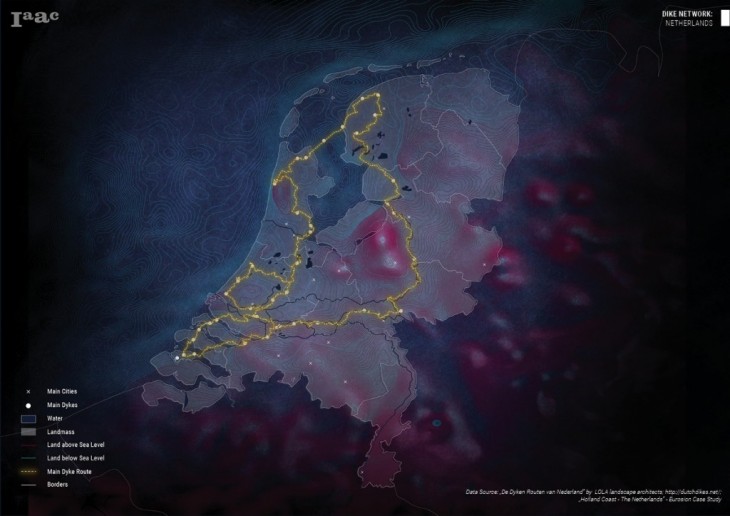

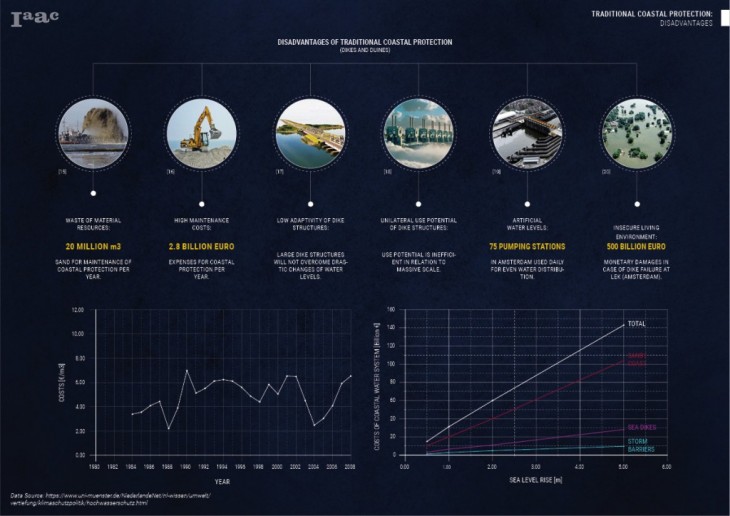
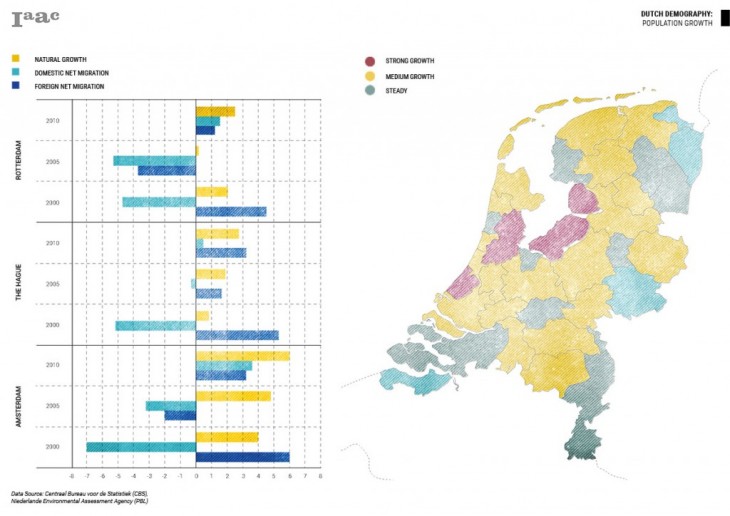
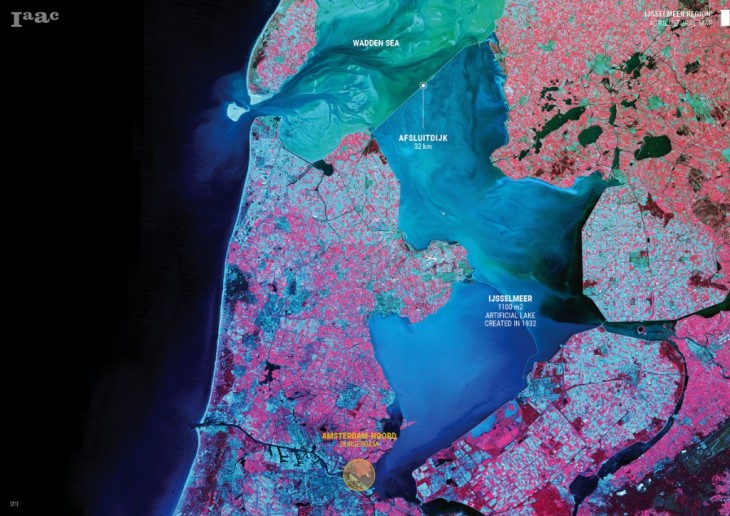
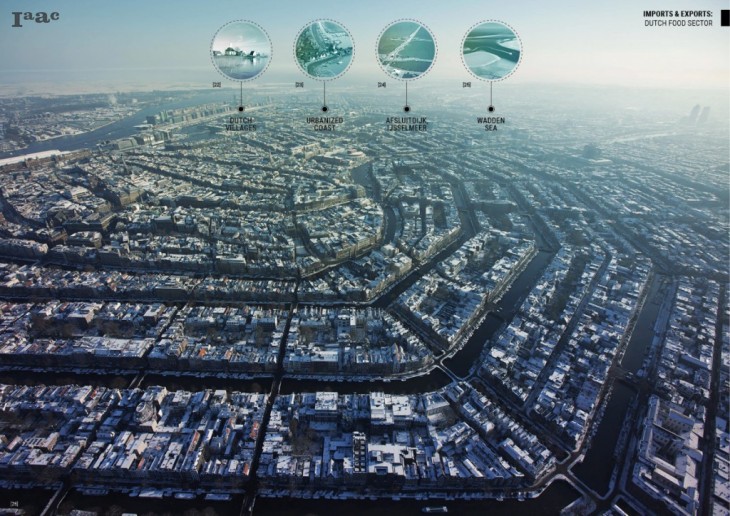
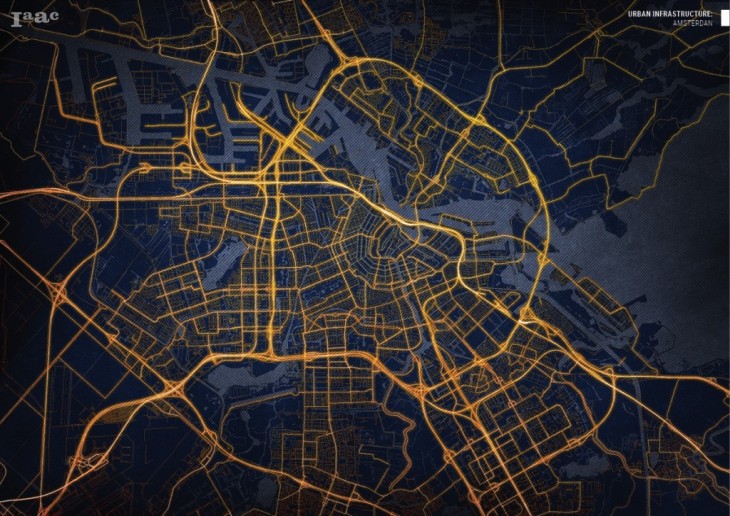
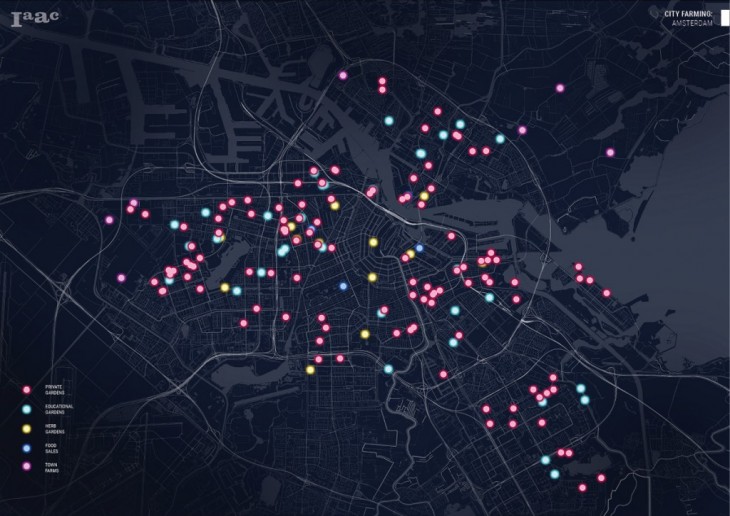
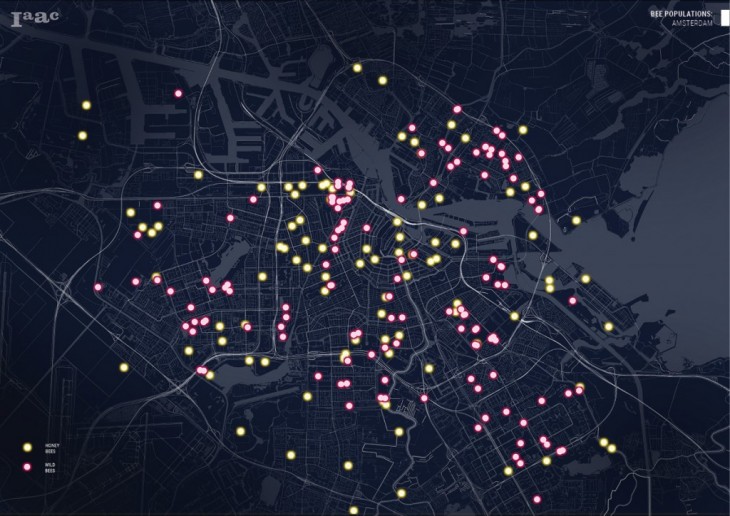
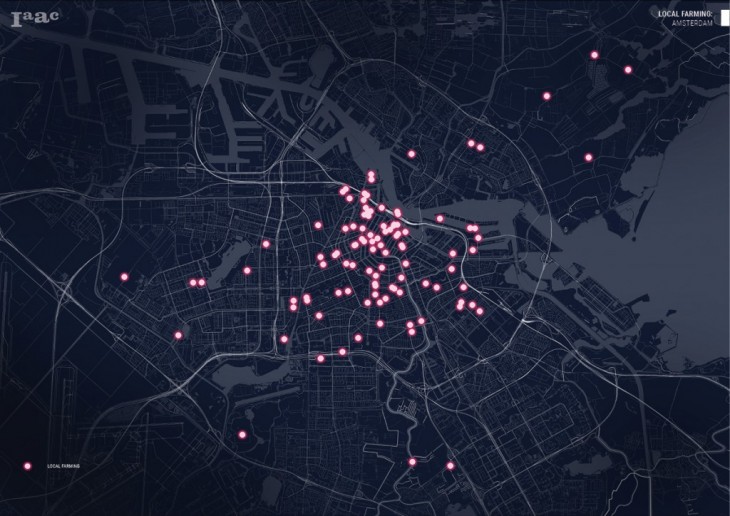
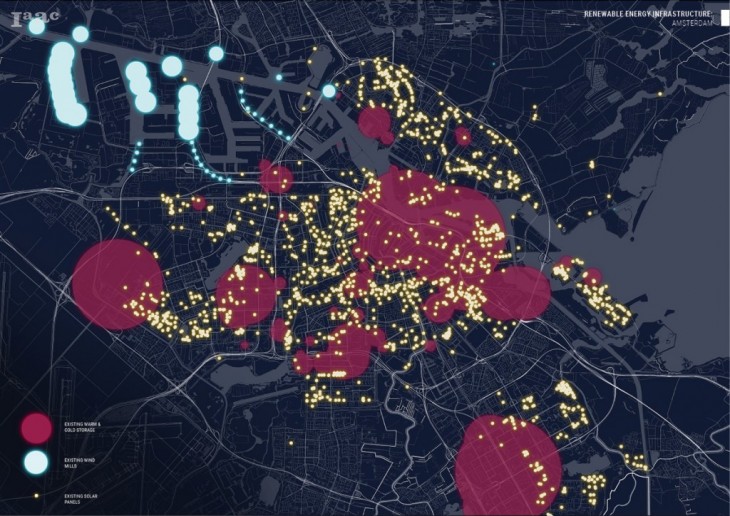
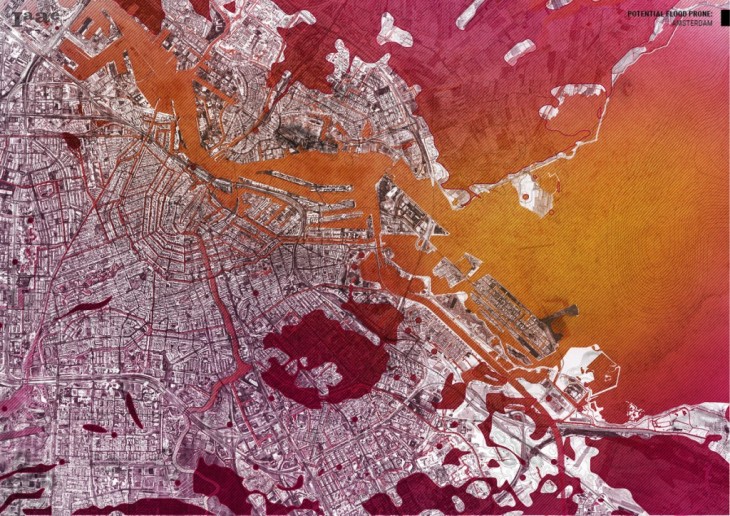
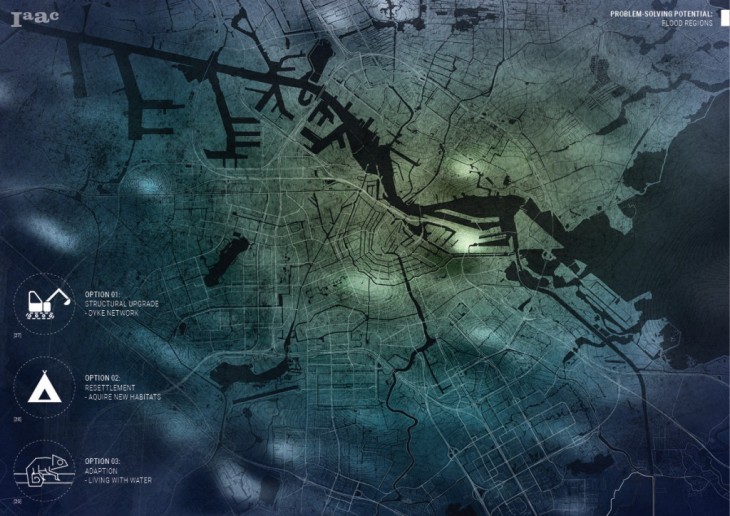
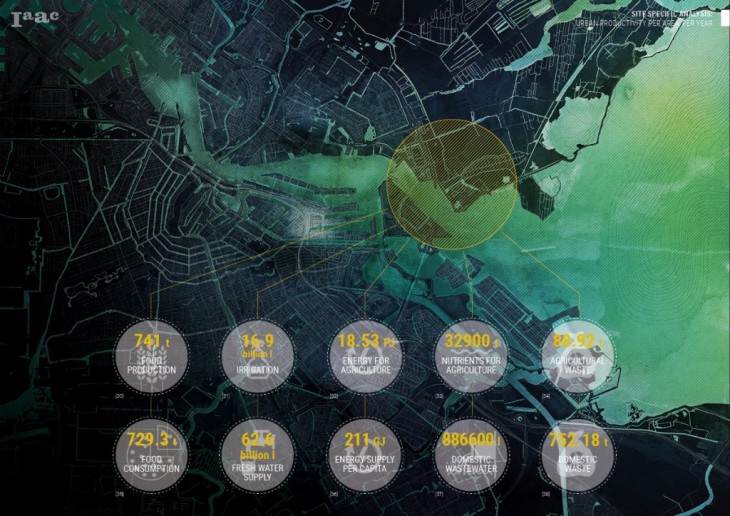
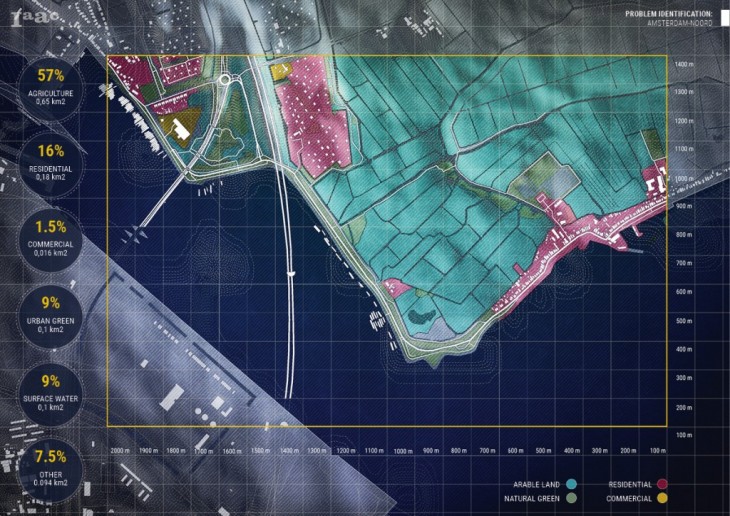
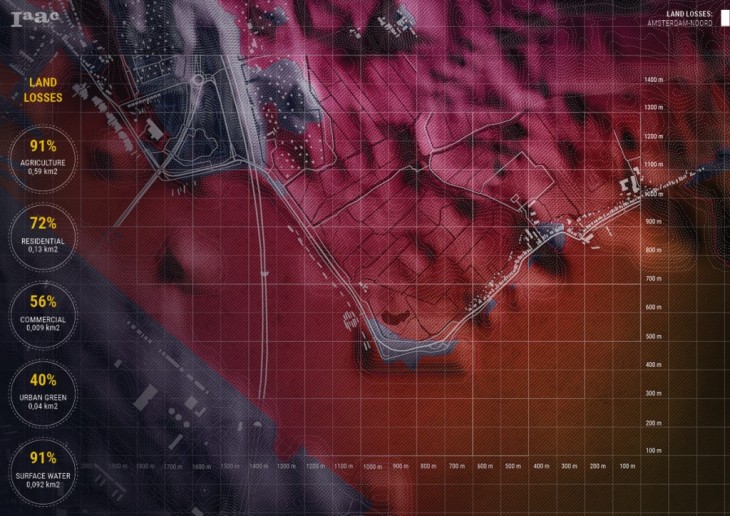
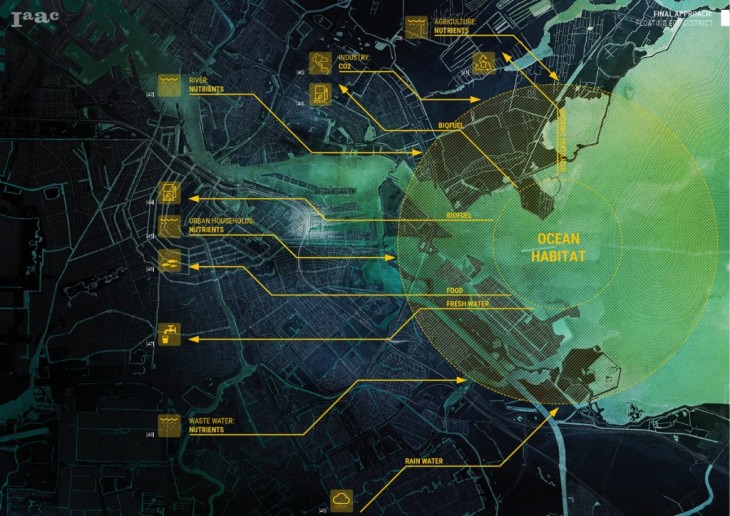
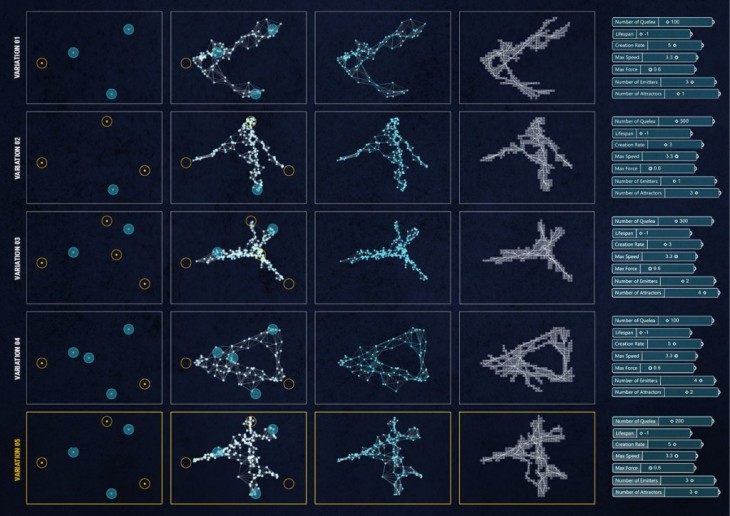
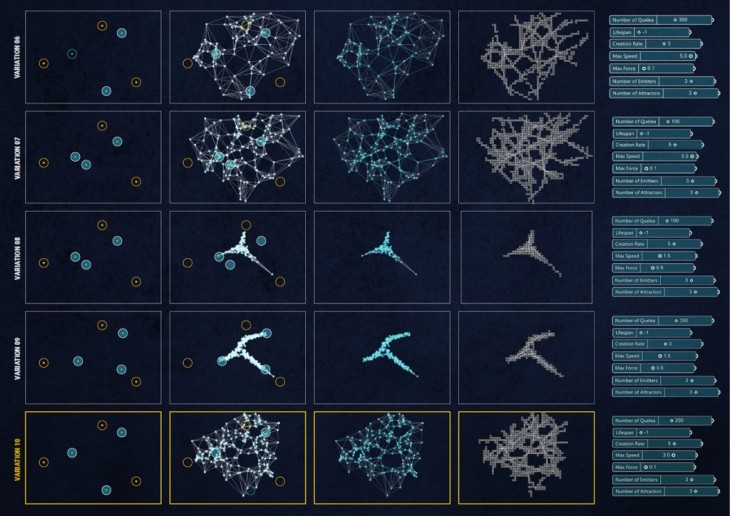
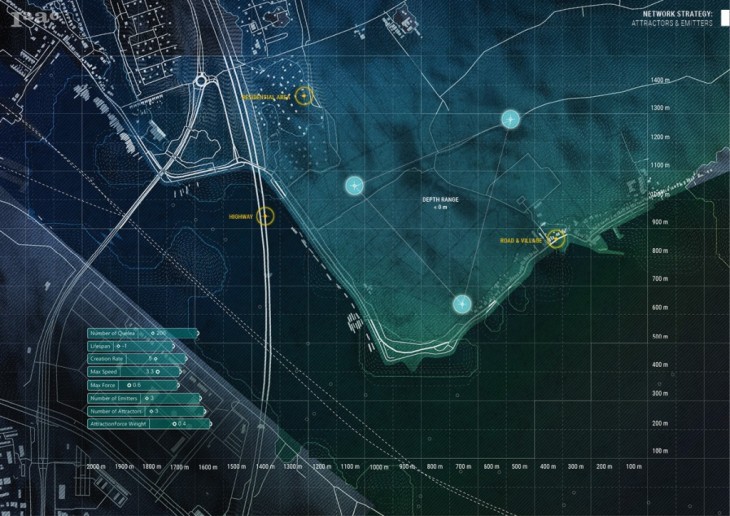
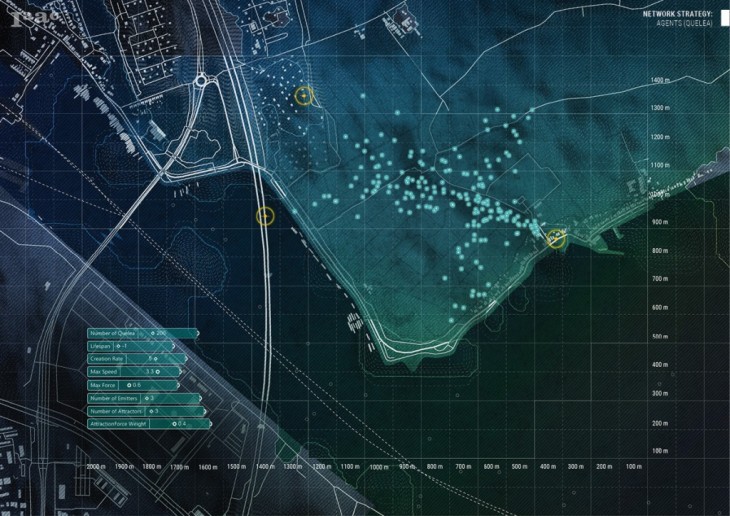
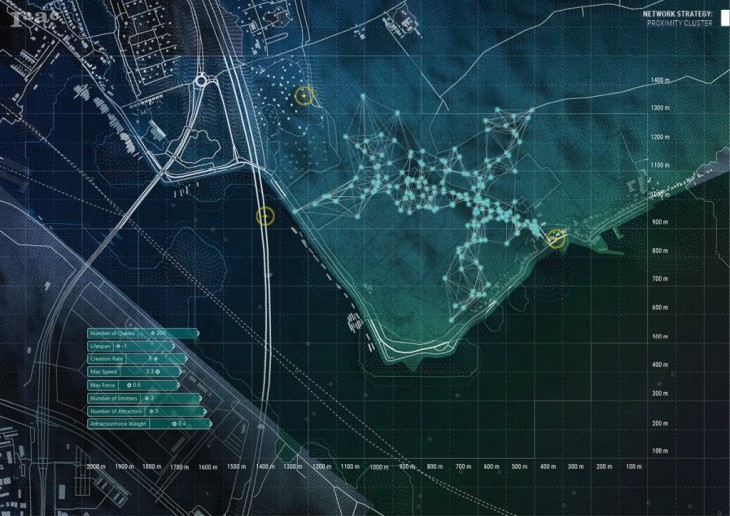
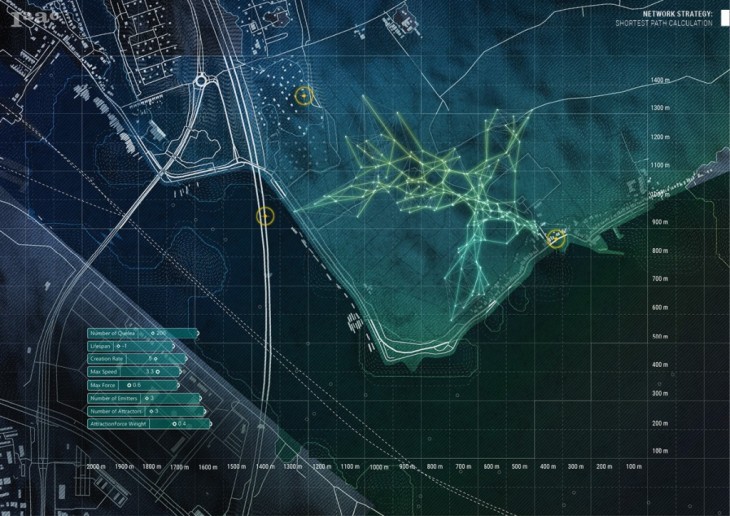
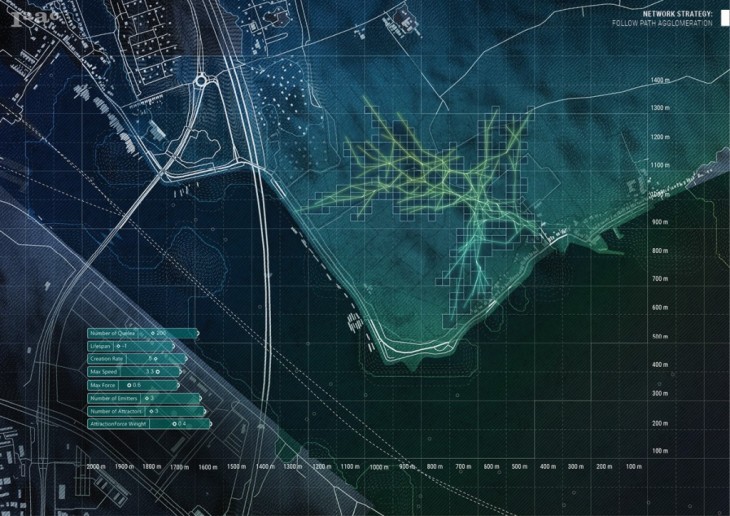
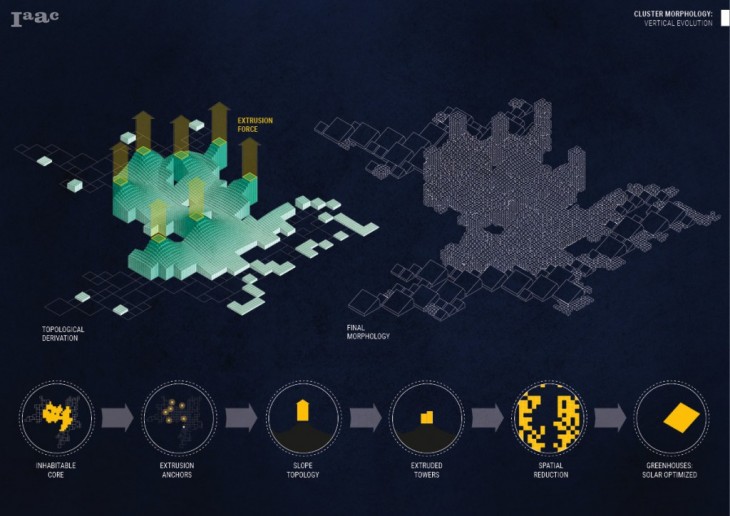
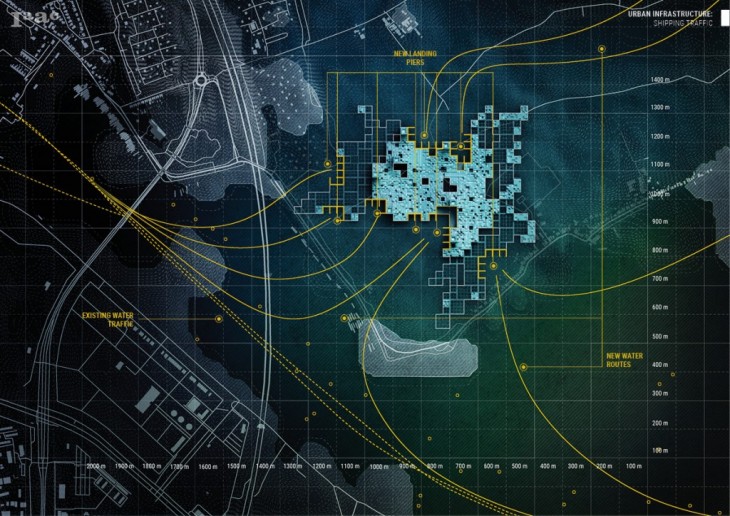
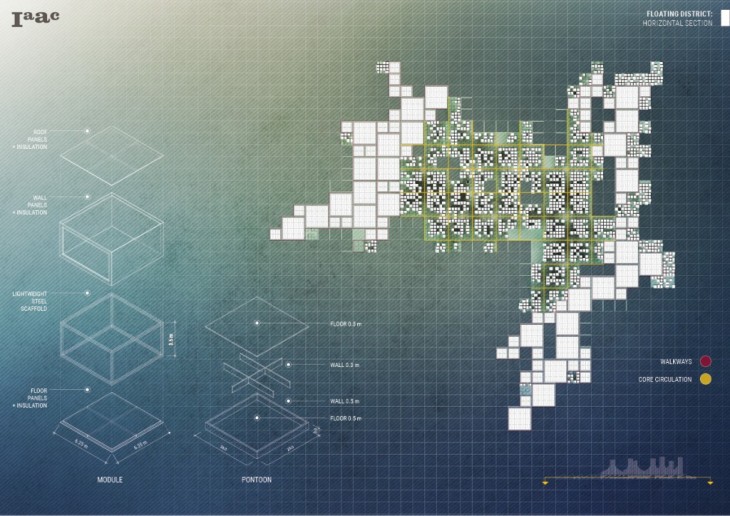
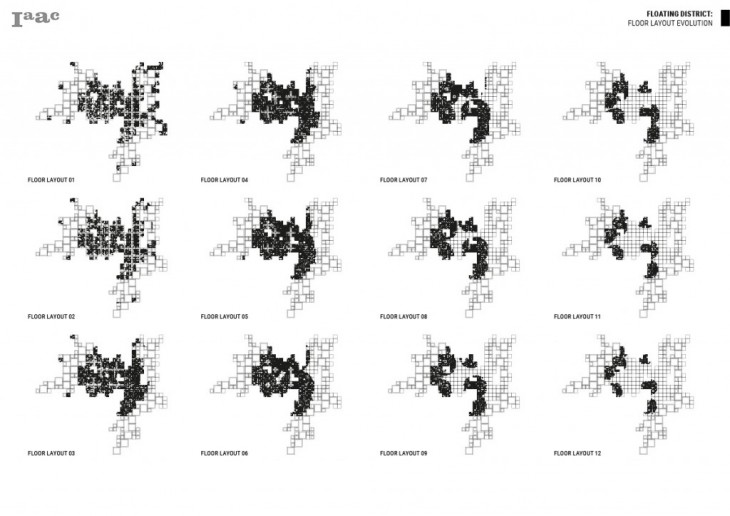
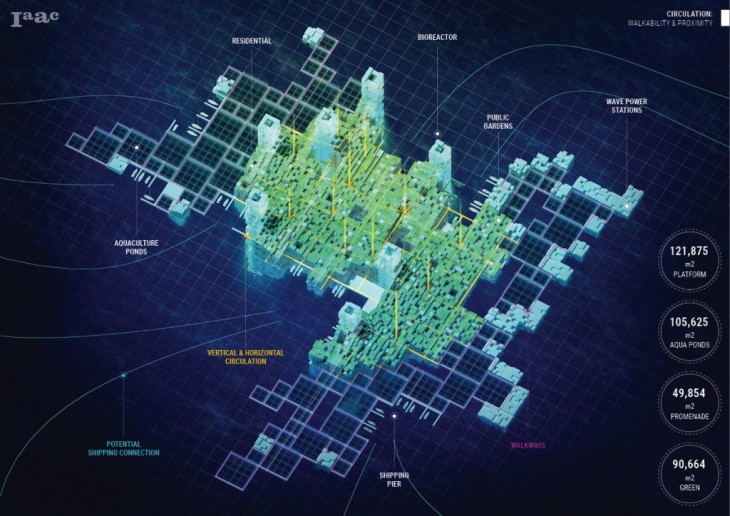
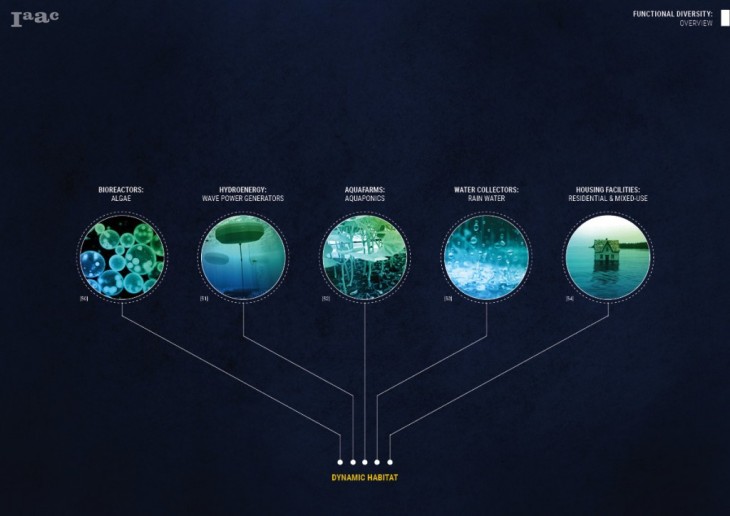
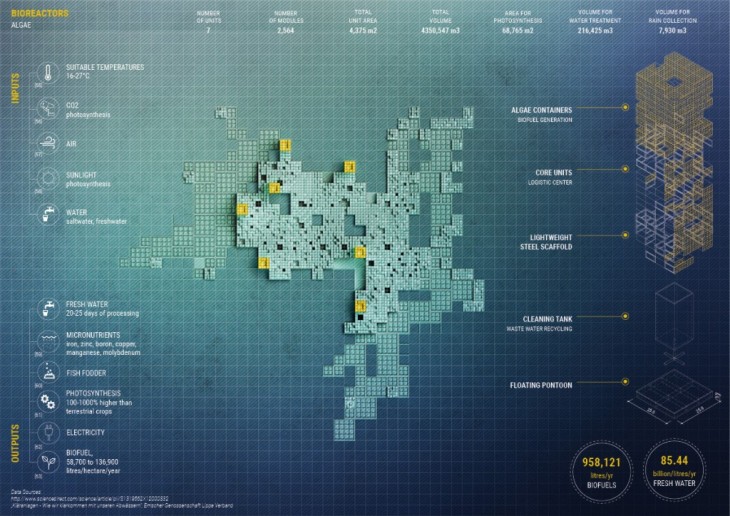
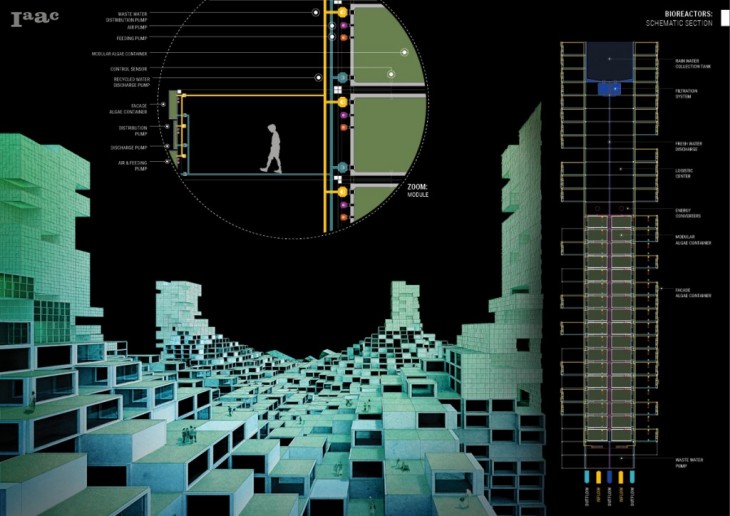
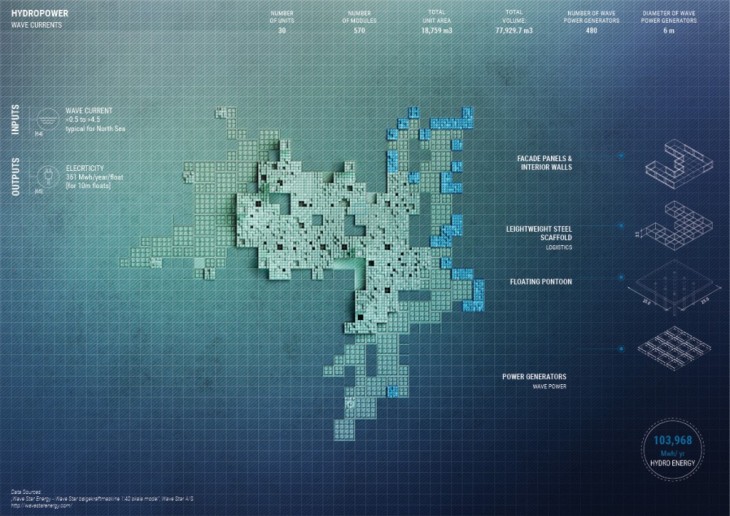
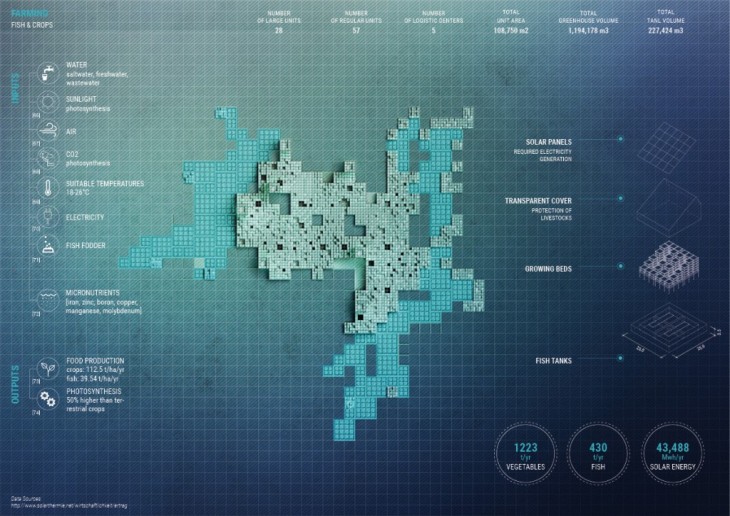
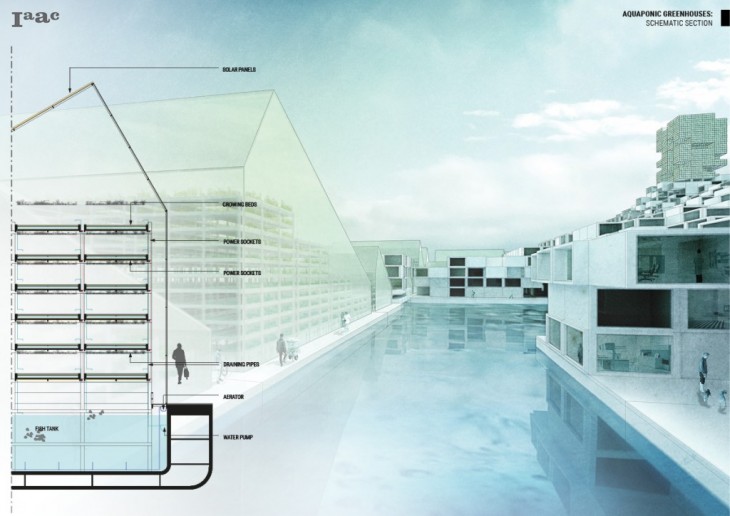
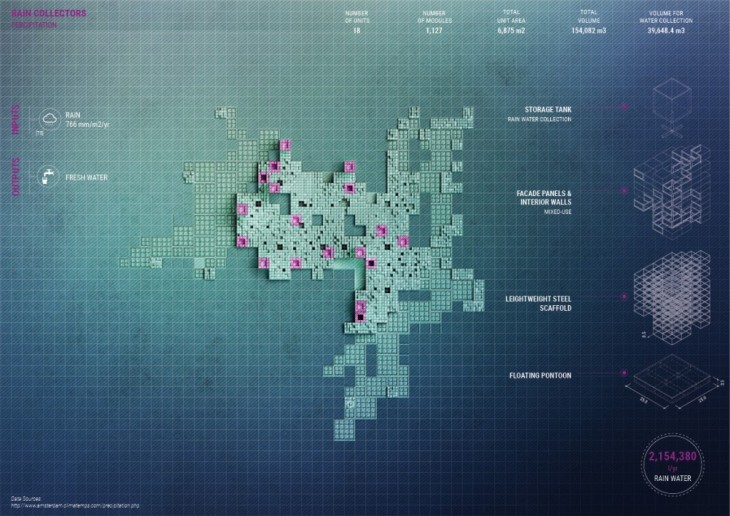
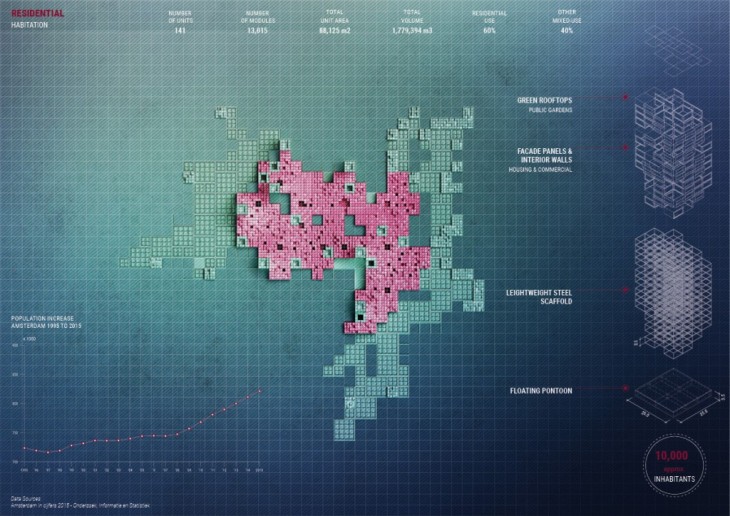
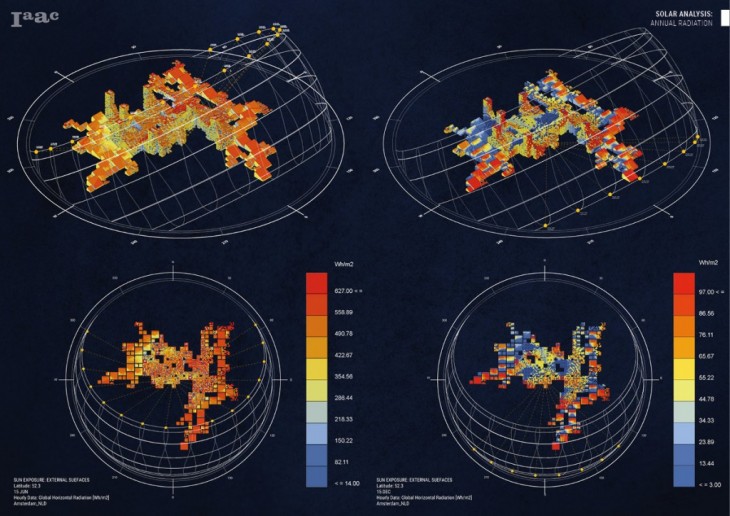

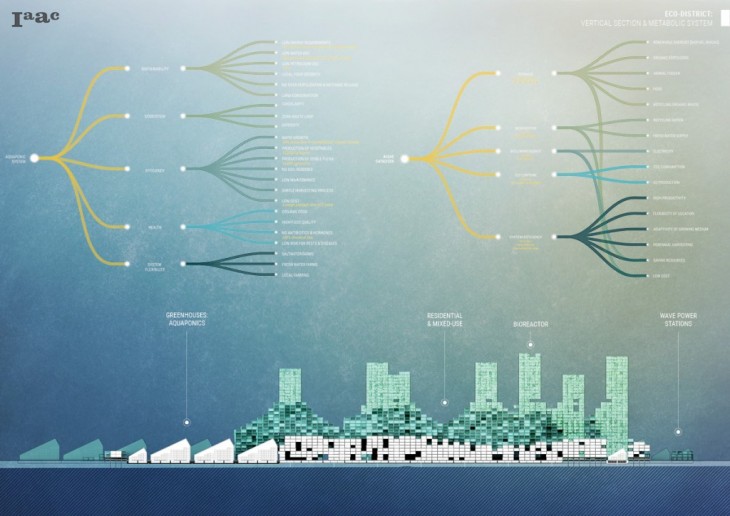
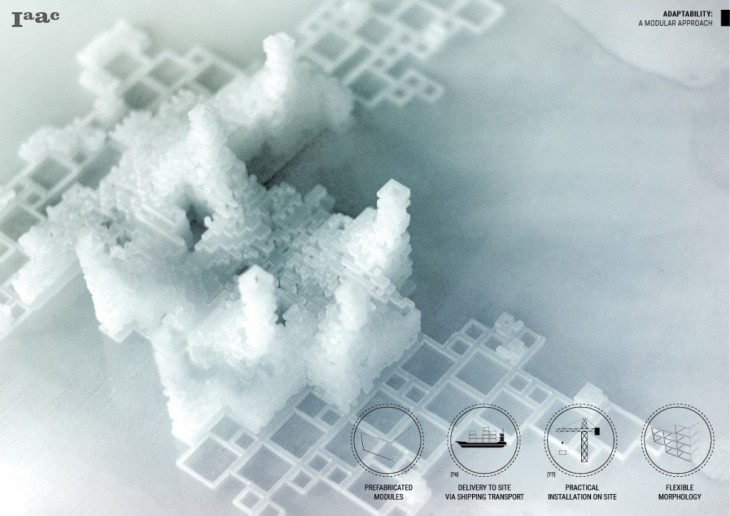
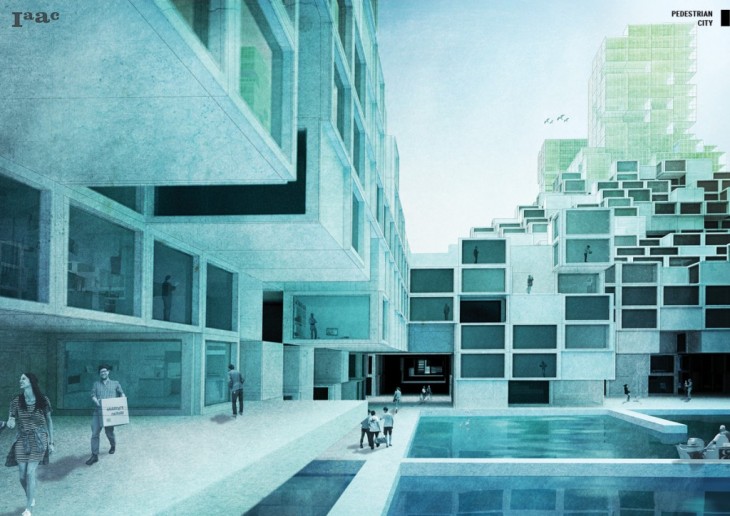
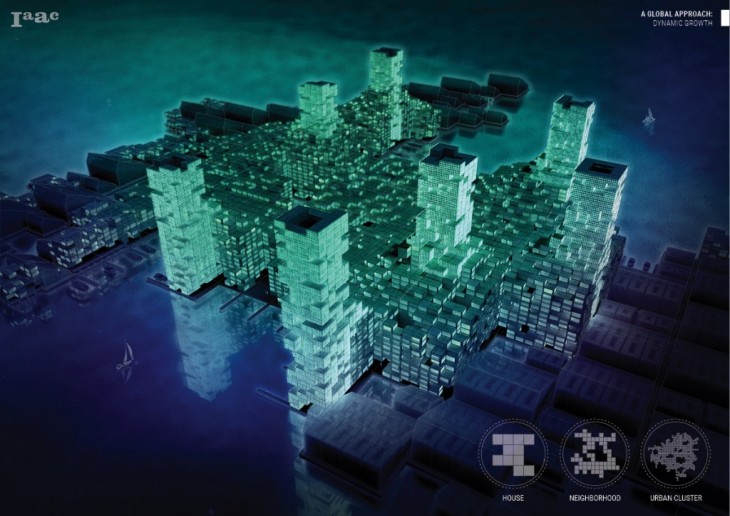


Within the scope of this thesis an autonomous floating eco-district located in Amsterdam has been established. This project proposes dynamism and adaptivity of urban settlements as a solution approach to global environmental challenges. However, also new questions have emerged from this research and deserve further exploration.
This thesis has introduced a dynamic settling strategy for sustainable urban growth on the ocean surface. Presently, climate change, global warming and rising sea levels are critically affecting our living environment. Moreover, population increase is a major threat to the global anthroposphere as human demands exceed the Earth’s ecological capacities. The consequences of these global issues give rise to new challenges on the development of urban habitats.
This thesis explores and evaluates several solutions for the global issues of rising sea levels and population growth. A radical approach has been taken and applied to a specific area in the Amsterdam-Noord neighborhood, including the villages of Durgerdam and Schellingwoude. The development of floating communities featuring a circular metabolic system is proposed as a solution to land and housing shortage. This research project introduces dynamic urban districts featuring a sustainable operating system and urban efficiency. Within the scope of this research project several leading questions have been raised which are as follows:
How can urban habitats adapt to predictable changes of the environment and reach a symbiotic relationship with their natural surroundings?
Could an extended urbanization of the sea surface be a solution for low-lying cities such as Amsterdam exposed to housing shortage and climatic stress?
As the urbanization of the sea surface offers new spatial opportunities, how can a city such as Amsterdam take advantage of new resources and urban constellations in order to become more productive and self-sufficient?
This thesis reveals the potential of floating eco-habitats featuring a zero-waste metabolism as an answer to these questions. The development of autonomous communities producing local goods and consuming local and renewable resources potentially has economic and environmental benefits. By urbanizing the ocean surface, expenses for coastal protection can be reduced significantly. In addition, the biodiversity of terrestrial ecosystems can be enhanced by returning space to nature. Nevertheless, it is critical to carefully observe and manage all metabolic operations of floating habitats to avoid negative impacts on aquatic ecosystems. Sustainability and metabolic efficiency are prioritized and promoted to conserve the maritime environment and obtain a symbiotic relation between city and nature.
As a result of this research a multi-scalar, multifaceted approach has been most promising in terms of the metabolic management and sustainability of urban ecosystems. Successful strategies for solving contemporary urban problems should emerge from a variety of multidisciplinary strategies which lead to the closing of chains in the metabolic nexus. One of the urban challenges of today is to identify new ways of continuously regenerating natural system from which we draw resources and create an economy that is adaptive and resilient. Combining different strategies such as resource recovery and recycling, the recreation of biotopes to generate a vital natural environment, optimizing metabolic operations and the use by-products for industrial processes can potentially be an answer to this new urban challenge. The implementation of floating self-sufficient communities on a neighborhood scale within a decentralized network can be a solution to the problem of metabolic linearity and inefficiency of urban habitats. Enabling those communities to be autonomous in terms of energy production, food and fresh water supply as well as waste management can pave the way for a comprehensive urban zero-waste ecosystem. Rather than incoherently optimizing cities this thesis proposes a holistic strategy by integrating economy, ecology and spatial diversification into city, nature and landscape. The main measures in this context would include the reduction of energy demands, the reuse of waste flows, the usage of renewable resources and local production of food and goods.
The research results in the development of an urban concept named “Dynamic Cityscape” which can be applied to various locations at different scales. The Dynamic Cityscape represents a neighborhood concept built on top of the water surface. The floating cluster is an eco-friendly, innovative district which is accessible and connected to the remaining city via shipping routes. The inhabitable core is prepared to host a population of approximately 10,000 inhabitants which are supplied by the surrounding infrastructures. Renewable energy is provided by algae-based bioreactors and wave power generators, whereas various aquapond greenhouses featuring aquaponic system produce fish and vegetables. In addition, the bioreactors are able to process the accumulated waste water volumes, releasing potable water. Along with the fresh water stored by rain water collectors it is distributed within the inhabitable core. The autonomous eco-district responds to global issues as well as to local requirements of a specific metropolitan area. The floating eco-districts are completely self-sustaining due to a circular metabolic infrastructure which makes them independent from trading operations with other cities. The Dynamic Cityscape approaches to cautiously equilibrate city and nature.
The Dynamic Cityscape projects proposes to accept potential losses caused by flooding and other catastrophes as part of an inevitable environmental transformation initiated by former destructive human intervention. The aim is to recognize our urban habitats as components of a much wider natural context which will change drastically and, at this point, unavoidably in the near future. Effectively, there is no doubt that catastrophes such as hurricanes or submergence will occur in the near future, the question is only when precisely and to what extend.
As a matter of fact, global warming and climate disasters cannot be prevented anymore, but civilizations can adapt to predictable facts by learning how to live with and on water. The urbanization of the sea surface can be a solution for low-lying urban habitats in delta regions which are critically exposed to land losses and housing shortage.
This radical, but consequent approach would reduce the need for traditional coastal protection measures and, thus, reduce expenses and material wastage. This proposal anticipates an initial loss of inhabitable space, but offers the opportunity for sustainable and adaptive urban growth in the long-term perspective. As stated by Pieter Tordoir: “We should be willing to accept some risk” even it is “difficult in our increasingly risk-avoiding society and policy.” [5]
The Dynamic Cityscape project can be a solution for low-lying cities such as Amsterdam exposed to housing shortage and climatic stress as it proposes to acquire new inhabitable territories. The neighborhood concept can be applied to different geographical locations imperiled by similar problems. Due to the dynamic clustering strategy, which allows adaptive urban growth in response to environmental transformations and local demands, the floating neighborhood is able to endure consequences of climate change. The floating urban cluster is based on a modular system which allows the adaptive urbanization of the ocean. The modularity facilitates morphological flexibility in response to user inputs and local demands. The modules can be pre-fabricated, easily transported and constructed on-site. Therefore, the Dynamic Cityscape can be a long-term solution to predictable and unpredictable environmental changes.
While this thesis has demonstrated the potential of floating eco-habitats featuring morphological adaptability and metabolic circularity as a solution to global challenges, many opportunities for extending the scope of this thesis remain. The research and project development of the Dynamic Cityscape has mainly been focussed on a holistic urban strategy. Based on the findings obtained within this thesis, a more in-depth design and development, including interior and constructive details, would take the project to the next level. This research proposes a conceptual framework for an urban district which deserves further elaborateness and technical preparation at a smaller scale.
The colonization of the ocean offers new spatial opportunities for future civilizations. Nationally operating companies such as DeltaSync have been exploring these opportunities in the Netherlands as an alternative to conventional urbanization. As a matter of fact, a floating urbanization is compatible with other relevant sustainability goals such as carbon neutrality and metabolic efficiency. The spatial and economic potential of the ocean surface deserves further exploration and investigation.
The aim of this thesis is to introduce a dynamic urban cluster which adapts to environmental transformations and thrives for a symbiotic relationship with its immediate natural surroundings. The development of self-supporting communities in cities such as Amsterdam features local autonomy and metabolic efficiency. In conclusion, the concept of floating urban habitats is a viable one, and a solution to environmental and demographic problems.
Dynamic Cityscape is a project of IaaC, Institute for Advanced Architecture of Catalonia (www.iaac.net) developed during the second year of the Master in Advanced Architecture by:
Student: Luisa Roth (www.luisaroth.com)
Faculty: Vicente Guallart, Ruxandra Iancu Bratosin
Text References:
[1] Climate Change 2013 – The Physical Science Basis, 2013, Fifth Assessment Report, by the Intergovernmental Panel on Climate Change – IPCC
[2] MEGACITIES – Exploring a Sustainable Future; 010 Publishers, Rotterdam 2010, ISBN 9780-90-6450-741-0, Print 1, 2010, p. 329, Chapter 05: The Dutch Context, The Urgency of Maintaining the Netherlands, by Joost Schrijnen
[3] Floating Cities, Article, The Environmental Atlas, 2010, by European Environment Agency (EEA), quote by Carina Czapiewska, DeltaSync
[4] According to www.fao.org
[5] “MEGACITIES – Exploring a Sustainable Future”, Edited by Steef Buijs, Wendy Tan, Devisari Tunas, With contributions by George Brugmans, Joachim, Declerck, Dirk Frieling, Paul Gerretsen, Peter Hall, David Harvey, Kingsley E. Haynes, Zef Hemel, Lars Lerup, Liu Thai Ker, Henk Ovink, Peter Nijkamp, Richard Rogers, Saskia Sassen, Joost Schrijnen, Richard Sennett, Peter Smeets, Edward Soja, Deyan Sudjic, Erik Swyngedouw, John Thackara, Pieter Tordoir, 010 Publishers, Rotterdam 2010, ISBN 9780-90-6450-741-0, Print 1, 2010, p. 90, Chapter 02: Identifying Megacities, Softonomics of the Sustainable City, by Pieter Tordoir
Image Credits:
[01] Created by Creative Stall from Noun Project
[02] Created by Emily Rinehart from Noun Project
[03] Created by Creative Stall from Noun Project
[04] Created by Isabel Martínez Isabel from Noun Project
[05] Created by Nut Chanut from Noun Project
[06] www.europapress.es/ciencia/habitat-y-clima/noticia-deshielo-groenlandia-llega-antes-mas-rapido-verano-20160701141504.html
[07] upload.wikimedia.org/wikipedia/commons/d/d4/Black_coral.jpg
[08] www.artnet.de/k%C3%BCnstler/edward-burtynsky/polders-grootschermer-the-netherlands-a-JdgRnEXylhmJkCT1DnEO3A2
[09] www.gardeningknowhow.com/garden-how-to/soil-fertilizers/reversing-soil-salinity.html
[10] www.uni-muenster.de/NiederlandeNet/nl-wissen/geographie/vertiefung/wasser/wassermangel.html
[11] ifthenisnow.eu/fr/node/1164
[12] geograph88.blogspot.com/2015/09/penyebab-amblesan-tanah-subsidence.html
[13] www.greshamsmith.com/projects/17th-street-and-london-avenue-canal-temporary-pump
[14] beeldbank.rws.nl/RuimtevoordeRivier/MediaObject/Details/DWW_Watersnoodramp_1953_332933
[15] www.ecomare.nl
[16] www.uni-kiel.de
[17] www.theafsluitdijk.com/projecten
[18] www.ecoformeurope.com/en/portfolio
[19] www.greshamsmith.com
[20] SSgt Paul Griffin
[21] earthshots.usgs.gov/earthshots
[22] www.weekendhotel.nl/nl/bed-and-breakfast-amsterdam-landelijk-amsterdam/6313
[23] www.iamsterdam.com/en/amsterdam-qr/north/durgerdam
[24] vietanhmunchen.wordpress.com/2013/12/19/nhung-cong-trinh-kien-truc-vi-dai-nhat-the-gioi/
[25] thanhnientudo.com/2015/05/16/du-lich-ha-lan/
[26] bureaubusker.nl/
[27] Created by Jev Downer from Noun Project
[28] Created by Road Signs from Noun Project
[29] Created by Y from Noun Project
[30] Created by Christopher Classens from Noun Project
[31] Created by Yazmin Alanis from Noun Project
[32] Created by Waleed Al-Alami from Noun Project
[33] Created by Cezary Lopacinski from Noun Project
[34] Created by Fellipe Camara from Noun Project
[35] Created by Ashley van Dyck from Noun Project
[36] Created by Waleed Al-Alami from Noun Project
[37] Created by Luis Prado from Noun Project
[38] Created by Fellipe Camara from Noun Project
[39] Created by Cezary Lopacinski from Noun Project
[40] Created by Francesca Ameglio from Noun Project
[41] Created by Yu Iuck from Noun Project
[42] Created by Cezary Lopacinski from Noun Project
[43] Created by lastspark from Noun Project
[44] Created by lastspark from Noun Project
[45] Created by Cezary Lopacinski from Noun Project
[46] Created by Rhys de Dezsery from Noun Project
[47] Created by Creative Stall from Noun Project
[48] Created by Cezary Lopacinski from Noun Project
[49] Created by Jennifer Cozzette from Noun Project
[50] algix.com/why-algae/
[51] inhabitat.com/tag/wave-power/
[52] www.ouroborosfarms.com/
[53] www.ihearth.org/rainwater/
[54] lolarudin.blogspot.com.es/2011/01/floating-house.html
[55] Created by Aaron K. Kim from Noun Project
[56] Created by Francesca Ameglio from Noun Project
[57] Created by Kimberly McGuire from Noun Project
[58] Created by artworkbean from Noun Project
[59] Created by Cezary Lopacinski from Noun Project
[60] Created by yng from Noun Project
[61] Created by Rediffusion from Noun Project
[62] Created by artworkbean from Noun Project
[63] Created by Marek Polakovic from Noun Project
[64] Created by Sergey Demushkin from Noun Project
[65] Created by artworkbean from Noun Project
[66] Created by artworkbean from Noun Project
[67] Created by Kimberly McGuire from Noun Project
[68] Created by Francesca Ameglio from Noun Project
[69] Created by Aaron K. Kim from Noun Project
[70] Created by artworkbean from Noun Project
[71] Created by yng from Noun Project
[72] Created by Cezary Lopacinski from Noun Project
[73] Created by Marek Polakovic
[74] Created by Rediffusion from Noun Project
[75] Created by Jennifer Cozzette from Noun Project
[76] Created by Sascha Elmers from Noun Project
[77] Created by Kenneth Von Alt from Noun Project